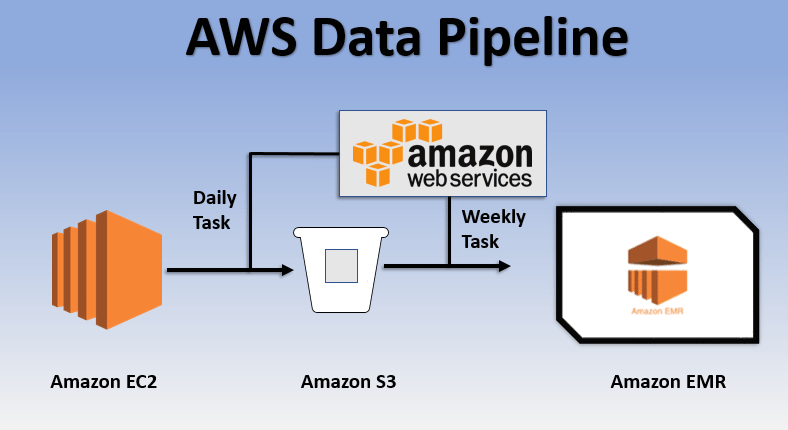In today’s data-driven world, businesses are drowning in a sea of information. Customer transactions, social media interactions, sensor readings – the list goes on. This ever-growing tide of data, aptly named “big data,” presents both challenges and opportunities. But how do you store this massive influx of information efficiently and securely? Enter the world of AWS big data storage – a suite of powerful tools designed to help you harness the power of your data.
What is Big Data Storage, and Why Does it Matter?
Big data isn’t just about a large volume of information. It’s characterized by the three V’s:
- Volume: The sheer amount of data can be mind-boggling. Imagine a library with not just books, but petabytes (that’s a million gigabytes!) of digital documents.
- Velocity: Data is constantly being generated, from social media posts every second to sensor readings from connected devices. It’s a never-ending stream.
- Variety: Big data comes in all shapes and sizes. Structured data like financial records coexists with unstructured data like social media posts and images.
Traditional storage solutions simply can’t keep up with the demands of big data. They’re often inflexible, expensive to scale, and struggle to handle the diverse nature of big data. This is where AWS big data storage comes to the rescue.
Unveiling the Arsenal: AWS Big Data Storage Options
AWS offers a comprehensive suite of storage solutions specifically designed for big data. Let’s explore some of the key players in this arsenal:
-
Amazon Simple Storage Service (S3): Think of S3 as the massive, scalable warehouse for your big data. It’s incredibly cost-effective, offering pay-as-you-go pricing and virtually unlimited storage capacity. S3 excels at handling all types of data, from structured to unstructured, making it a versatile workhorse for big data storage.
- Key Features of S3 for Big Data Storage:
- Scalability: Effortlessly scale storage up or down based on your needs.
- Durability: S3 boasts industry-leading data durability, ensuring your data is safe and sound.
- Security: S3 offers robust security features to keep your data protected.
- Use Cases for S3 in Big Data Workflows:
- Storing large datasets for analytics.
- Archiving historical data.
- Serving static content for web applications.
- Key Features of S3 for Big Data Storage:
-
Amazon Glacier: For data that needs to be archived for long periods but doesn’t require frequent access, Amazon Glacier is the perfect solution. It offers extremely low storage costs, making it ideal for long-term data retention. Think of it as the deep freeze for your data, keeping it safe and accessible for years to come.
-
Amazon FSx: Not all data is created equal. For specific needs, Amazon FSx offers a family of tailored file systems. Imagine having a dedicated storage solution optimized for different data types, like high-performance file systems for scientific computing or file systems optimized for Windows applications.
-
Amazon S3 Glacier Deep Archive: For data that requires even more long-term archival and retrieval times at exceptionally low costs, Amazon S3 Glacier Deep Archive is the answer. Think of it as a digital vault, burying your data securely for retrieval years, even decades, down the line.
-
AWS Snowball: Moving massive amounts of data on-premises to the cloud can be a bottleneck. AWS Snowball acts as a secure on-premises data transfer bridge. Imagine a high-capacity device you can securely fill with your data on-site and then ship to AWS for upload, streamlining the big data transfer process.
Choosing the Right Tool for the Job: A Comparison of AWS Storage Services
Selecting the most suitable AWS storage solution for your big data needs depends on several factors, including data size, access frequency, and budget. To help you navigate this decision, let’s take a look at a table comparing some key features of the services we’ve discussed:
Feature S3 Glacier EBS FSx Glacier Deep Archive Snowball Use Case Frequent Access Long-Term Archive Frequent Access Specific Needs Ultra Long-Term Archival On-Premises to Cloud Transfer Scalability Highly Scalable Limited Scalability Highly Scalable Varies by File System Limited Scalability Not Applicable Cost Pay-as-you-go Extremely Low Cost Pay-per-Volume Varies by File System Extremely Low Cost One-Time Transfer Fee Access Speed Medium Very Low High Varies by File System Very Low Not Applicable Beyond Storage: Essential Services for Managing Your Big Data Lake
While storage is crucial, managing your big data lake requires more than just a digital warehouse. Here are some additional AWS services that play a vital role:
-
AWS Glue: Imagine a massive library with no organization. AWS Glue acts as the data catalog, creating a searchable index of your data in S3, allowing you to easily discover and utilize your data assets.
-
AWS Lake Formation: Governing a vast data domain requires structure. AWS Lake Formation helps you define access controls and data security policies, ensuring your data lake remains orderly and secure.
-
AWS DataSync: Streamlining data ingestion, the process of bringing your data into the lake, is essential. AWS DataSync offers a variety of options for efficiently moving data from on-premises sources or other cloud platforms to your AWS storage solution.
By leveraging this suite of AWS big data storage and management services, you can transform the data deluge into a valuable resource, empowering you to unlock the hidden insights within and propel your business forward.
-





